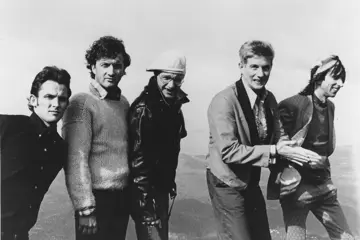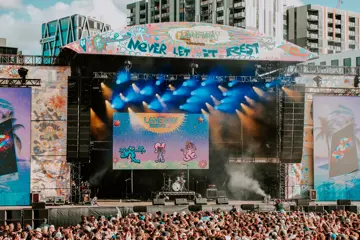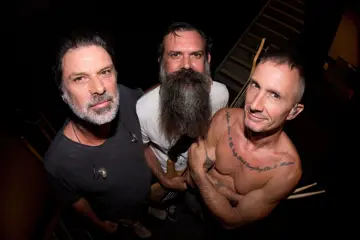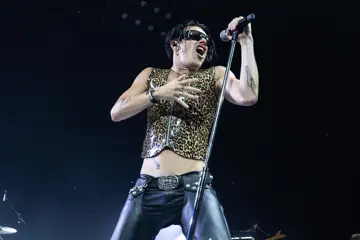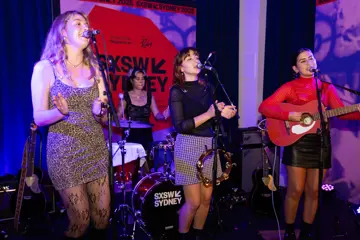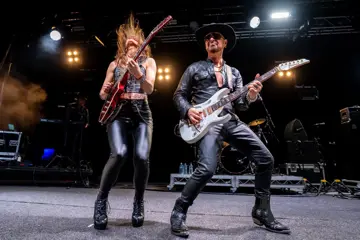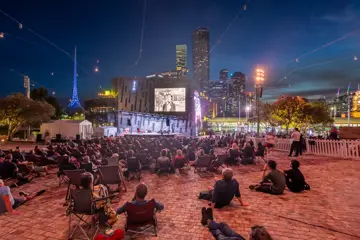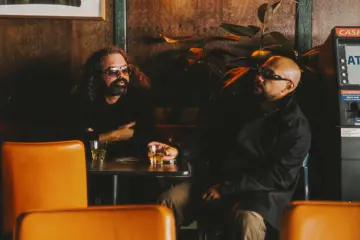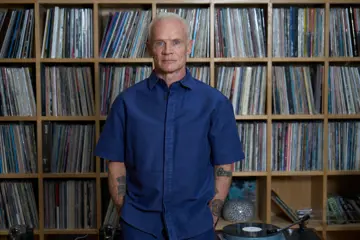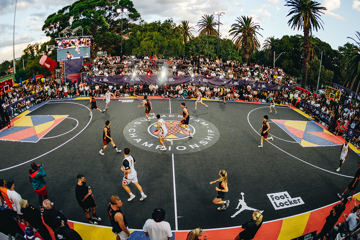Big crowds. Alcohol and mind-changing chemicals. An atmosphere of “doing what we please”. Frenzied dancing. Unpredictable weather and risky behaviour by younger patrons. Long days that go into late night hours. The use of staging and rigging.
Remote locations for outdoor festivals with narrow access to medical services are more vulnerable to bushfires and nasty weather and have undulating landscapes where trips and falls are common.
These are just some of the reasons given by Australia’s insurance sector as to why it sees the live music sector as high risk, and why premiums are so high that they have become a nightmare for festivals and live music venues.
Executives spoke last Friday (October 11) at Parliament House in Canberra at the latest House of Representatives Standing Committee on Communications and the Arts public hearing. It has been holding hearings around the country since March to get a fix on challenges and opportunities within the live music industry.
Focus
Friday’s meeting focused on insurance, as the live sector complained that either business or event premium costs had risen tenfold, or some grassroots venues had been forced to close because they could not get covered.
Don't miss a beat with our FREE daily newsletter
Others who’ve tried to expand their revenue stream have also gotten in trouble with insurers. Music venues that were only ticketed for live events experimented with extending the night to include DJs and a fresh audience of ravers. Many didn’t realise that this made them nightclubs in the eyes of insurers, which meant premiums became upwards of $100,000.
“It has to do with the type of genre,” said drummer-turned-entertainment insurance broker Jason Holmes about which events are more claims-prone.
“I go to a lot of festivals and events, and sometimes I cringe at what the artist will do to engage with the crowd. OK, it’s fun. But it’s only fun until something goes wrong.”
Physical injuries from moshing and crowd surfing led to claims of hundreds of thousands of dollars.
Explained Holmes, “Ten years ago, a broken ankle was (worth) $10,000 (in damages). Then $100,000. Now it’s $200,000. There have been some claims for $400,000.”
An outdoor festival can require attendees to wear sensible footwear. “But people turn up in thongs. Can you deny entry to someone in thongs?
Holmes is approaching 30 years in the insurance brokering game, finding answers for the entertainment sector. H2 Insurance Solutions, which he founded in 2007, has on its client list Nitro Circus, TEG Dainty, Chugg Entertainment, Bluesfest, and Live Nation.
In 1995, limits to liability insurance were $500,000. These days, they range from $5 million to $20 million. A handful go for $50 million.
Holmes always recommends that his clients do not go under $20 million. “You never know what the problem is. Because it's only one occurrence with a lot of people in a confined space, that’s the limit you have to hand out between everyone.”
What works against the live sector, he said, is that some patrons have a tendency to blame promoters for their own spills.
Tendency
There’s a tendency for judges to side with victims. The process of claims varies from state to state. Insurers and promoters are inclined not to defend if the case is in a certain state or goes to a certain court or judge. Losing a claim means higher premiums for a promoter.
“They're saying, ‘This is not correct, and we shouldn’t have to suffer this claim against our record.’ But they look at the legal costs and what the courts in that state will award against us, so we’d better try and get rid of this.”
The rising cost of litigating claims across the board—caused by delays in settling, a tendency for courts to award larger penalties, greater use of expensive expert witnesses, and the escalating frequency and cost of natural disasters—has already made insurers cautious about taking risks. Insurance costs have risen by 40 per cent since 2015.
So about 24 insurance companies will cover premiums for vehicles in Australia. But aside from one or two exceptions, most give the live sector a wide berth.
“Due to the specialised nature of these risks, very few insurers offer public liability insurance for large live music events and venues,” Alexandra Hordern, General Manager of Regulatory and Consumer Policy at industry body the Insurance Council of Australia (ICA), told the hearing.
Local insurers don’t have a big enough payment pool to take risks. So, most Australian live events have to get premiums from overseas companies like Lloyds of London. Lloyds, which made a US$13.5 billion profit in 2023, can afford such exposures.
Hordern readily admitted that soaring insurance expenses are causing serious pain in live music.
“Although rising insurance costs are not the sole factor contributing to the closure of live music venues, we do know that it plays a significant role in the viability of these businesses, especially the small and medium businesses which may lack the financial capability of absorbing these premiums.”
She revealed that the ICA has “commissioned a report to identify reforms that could (increase) insurance capability in high-risk sectors, including the live music industry.”
The trade body has also worked extensively with various music associations—and specifically the Australian Live Music Business Council (ALMBC)—on lowering premiums and attracting more insurance companies to the sector.
It has been seen how the caravan and sports sectors attained these simply by reducing injuries and claims through “risk mitigation” or ensuring they pre-empt issues that could cause injuries.
Apps
ALMBC’s Howard Adams and Andrew Bassingthwaighte spoke at the hearing about two apps they set up to help the music industry and have risk management plans in place.
One app teaches small to medium venues what to do before they apply for insurance coverage. “It allows smaller businesses to better understand what insurance companies are looking at, and what they need to see and learn about their businesses to provide it,” explained Adams, the ALMBC’s Chair.
This means, for instance, capturing images of venue operators ensuring that the stairs are non-slip, the music rooms are carpeted, sharp broken tiles in the bathrooms are replaced, and all images of audience moshing and surfing are deleted from social media. “It is to present the best picture you can to get the best possible quote.”
The other app stores recordings in case of a claim. This would include footage of the owner and staff on a daily, weekly or monthly walk-through of the club, checking for risky areas.
It would document an accident, including eyewitness reports and staff response to help the injured person. This would be essential if a claim is filed three or four years later when memories are hazy. “If you do that upfront, you’ll have a much better chance of being able to resolve the issue with the patron who’s been injured before it gets into a legal framework when everyone’s being sued and costs escalate.
“What we want the venues to do is to really look after the patron. If they are legit, what can we do to help them out? The more you do that, the less chance it’ll be referred to lawyers.”
Advocates
The ALMBC has held high-level discussions with local underwriters, telling the hearing, “They’ve been amazing advocates”.
Adams predicted it could take at least up to five years before local underwriters return in bulk to cover public liability for grassroots venues. “We have to give them evidence and data that claims and claims values are going down for it to happen.”
He stressed: “To convince the industry we are less of a risk, we need the whole industry to do that; it can’t be just a few.”
How can cash-strapped venues afford to pay to become risk-free? Some state governments are already offering grants for this. Down the track, help for this—and other bills facing venues—will come from the arena tax that the ALMBC and the wider music industry have been pushing for.
It will apply to any show with over 5,000 people, with $1 from each ticket added to the production cost. That means the artist, promoter, venue, and consumer each pay 25 cents. The ALMBC estimates that if the tax had been in place last year, it would have generated $12 million. Grassroots venues would apply for a grant, which is at this stage expected to be $15,000.
The tax would be a voluntary agreement between promoters and stadiums/arenas. “It’s a user-pays model; the Government doesn’t need to be involved,” Adams noted.
But governments do need to play a part in solving the current insurance dilemma, according to the ICA’s Alexandra Hordern. “In addition to risk mitigation, we consider there is an urgent need for governments to undertake a review of liability settings to ensure they remain fit for purpose and support ongoing insurance affordability and availability.”
The Committee also got input from Statewide Mutual as a possible model for the music sector. Mutual was created in 1993 to help reduce the risk profiles of activities by NSW local councils and obtain best value insurance cover.
However, the live music industry generally believes that self-insurance is high-risk and not appropriate for its needs.



